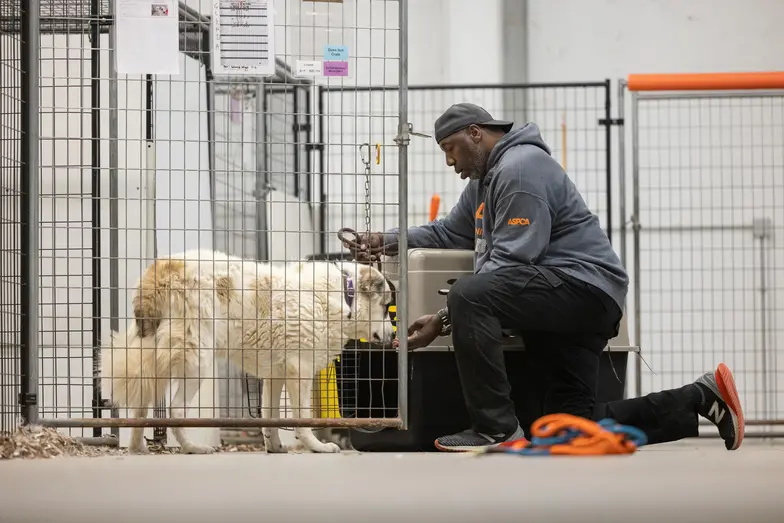Animal Housing for Isolation and Quarantine

Both isolation and quarantine aim to prevent the transmission of infectious disease within a population. Understanding the difference between isolating and quarantining animals is essential in managing infectious disease and also helps anticipate their housing needs.
- Isolation: Process of physically separating animals who have been diagnosed with or are showing clinical signs of an infectious disease.
- Quarantine: Process of physically separating animals exposed to, but not showing signs of, infectious disease to monitor for signs of illness and prevent the spread of disease.
Historically, most shelters quarantined every animal during intake — whether they were presumed healthy or sick — to ascertain if animals entering the shelter were incubating and would develop infectious diseases. However, broadly applied intake quarantines actually increase the incidence of infectious disease in shelters. This increase is due to the correlation between longer lengths of stay in shelters and disease development. Intake quarantine also exacerbates crowding in shelters which sets off a cascade of harmful consequences. Today, shelters are advised to replace broadly applied intake quarantines with intake exams conducted by trained medical staff who screen animals for signs of illness. Additionally, collecting a thorough historical summary of an animal during intake can help determine if the animal has been exposed to a disease or is coming from a high-risk setting, like a hoarding case.
For rare occasions when shelters need to quarantine seemingly healthy animals, a standard housing ward can suffice as long as the ward is dedicated only to animals of the same species sharing the same exposure. In these high-risk scenarios when shelters quarantine a population of healthy animals, quarantine holds can be shortened with a careful risk assessment, often accompanied by diagnostic testing. For instance, in a population of dogs exposed to parvovirus, analysis of each dog’s age and vaccination history, often supplemented with antibody titer testing, can be used to better determine the dog’s risk of developing disease. This assessment may allow low-risk dogs to be released from quarantine.
Isolation Housing
In most shelters, animals housed in isolation have a multitude of stressors: they are sick, subject to frequent treatments, kept in “back-of-the-house" enclosures and have limited opportunities for enrichment or positive interactions with people. Generally, ill animals will have longer lengths of stay in the shelter unless foster care can be used to provide isolation in a home environment.
It is important to invest in housing for isolated animals, even if the public may never see it. Isolation enclosures should be some of the largest, most enriched housing units in the shelter. Guidelines from the Association of Shelter Veterinarians include the following requirements for isolation housing in shelters:
- Shelters must have a means of isolating infectious animals.
- Human and animal traffic through isolation spaces should be limited.
- Different species must not be housed within the same isolation room.
- Separate isolation areas must be provided for animals with different highly contagious diseases to prevent coinfections with multiple pathogens.
- Isolation rooms must:
- not open directly into another animal housing area.
- include clear labels to indicate their current use and necessary precautions.
- Isolation rooms should:
- have access to a handwashing sink.
- include space for treatments, examinations and storage for dedicated supplies.
- Ideally, isolation rooms have windows that allow staff to observe animals without needing to repeatedly enter the room.
- Isolation housing must meet the medical and behavioral needs of ill animals.
Isolation and Quarantine Housing Enrichment
Shelters should develop plans to ensure animals receive behavioral enrichment while living in isolation and quarantine. Options are similar to enrichment techniques used in other areas of the shelter, but have precautions to minimize the risk of transmitting infectious disease. Enrichment activities that utilize multiple senses — visual, auditory, olfactory — can often be provided within an animal’s enclosure. Access to larger primary enclosures and designated, easily sanitized areas for exercise facilitate natural physical activity. Creative disposable enrichment items reduce opportunities for fomite transmission and can also be cost effective and fun to make. Recruiting and training volunteers for specific isolation and quarantine care assignments, like behavioral enrichment, can provide animals with crucial social interaction without compromising biosecurity.
Check out these additional resources to help your shelter’s cats and dogs get the enrichment they need:
We have lots more on this subject:
